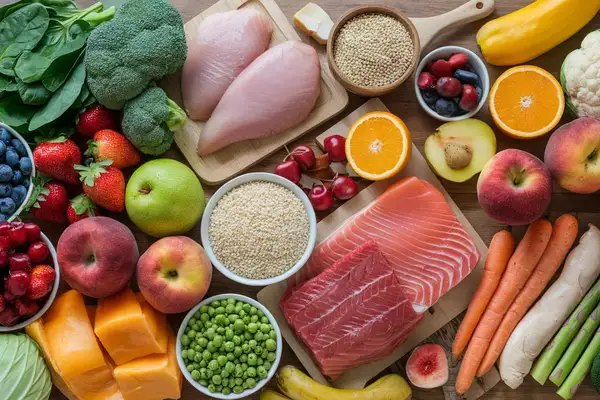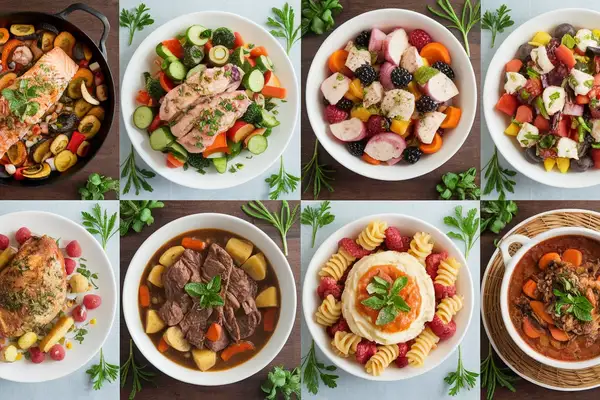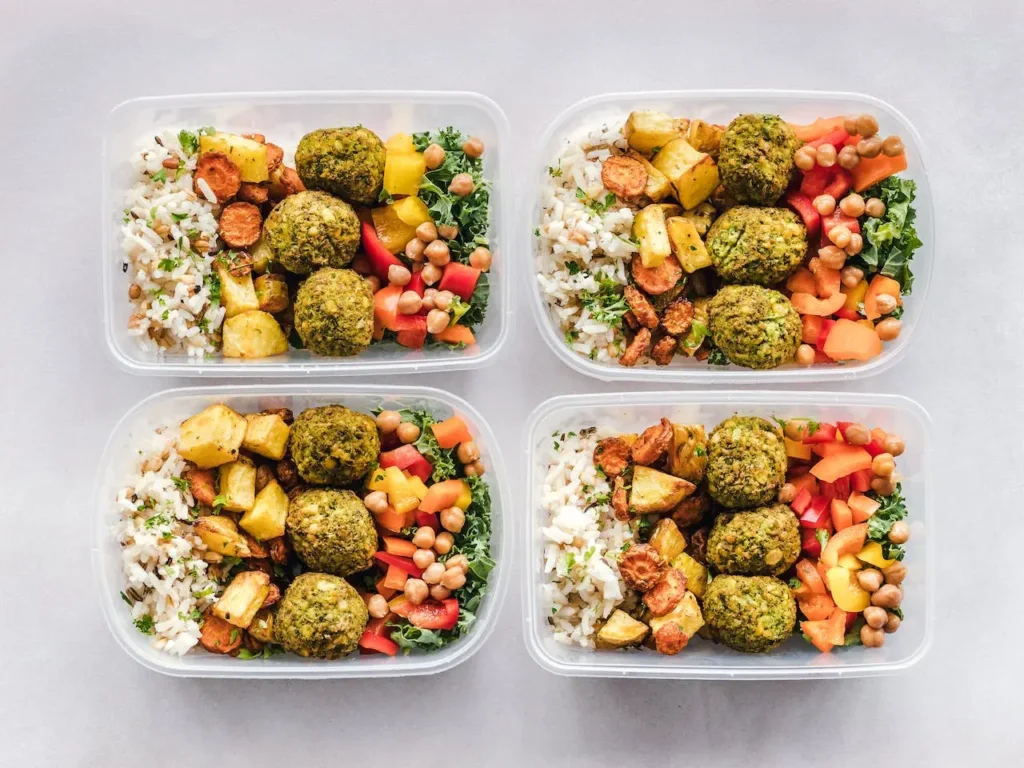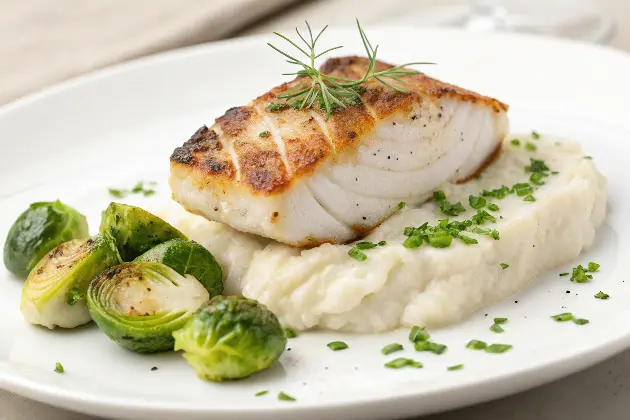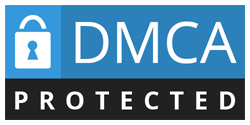7 Day Meal Plan for Low Potassium Diet: A Healthy Guide
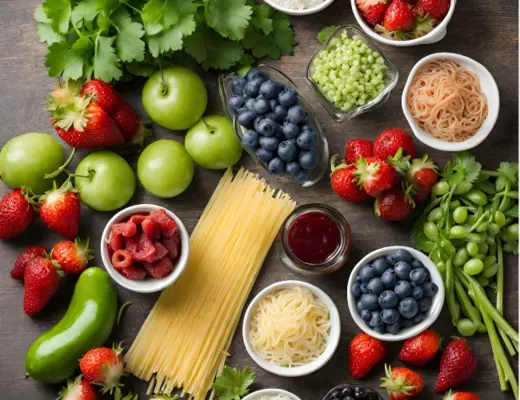
This post may contain affiliate links, meaning I may earn a commission if you make a purchase, at no extra cost to you. I only recommend products I trust. Thank you for your support.
When your doctor suggests a low potassium diet, it’s typically because your potassium levels need to be carefully managed.
This mineral, crucial for heart function and muscle contraction, can accumulate in your body if your kidneys are not working optimally, leading to potential health risks.
In this article, you’ll learn exactly what is a low potassium diet and provide you with a carefully crafted 7 day meal plan for low potassium diet, including the benefits and how to successfully integrate it into your lifestyle.
Each day’s low potassium diet menu is thoughtfully planned to offer balanced options for breakfast, lunch, dinner, and snacks, all while keeping your potassium levels in check.
Let’s dive into a week of eating that supports your health goals without sacrificing taste or satisfaction.
What is a low potassium diet?
A low potassium diet is a meal plan designed to limit the intake of potassium (2000 to 3000 milligrams per day), a mineral essential for the proper function of nerves and muscles.
The primary purpose of a low potassium diet is to prevent potassium levels in the blood from becoming too high.
For most people, the kidneys maintain normal potassium levels in the blood. However, certain health conditions, particularly those affecting the kidneys, can hinder the body’s ability to regulate potassium properly.
When this happens, high levels of potassium can build up in the blood, a condition known as hyperkalemia, which can be dangerous and lead to heart problems or other serious health issues.
This can be important for individuals with:
- Chronic kidney disease (CKD) or end-stage renal disease (ESRD)
- Acute kidney injury
- Conditions that affect how the body handles potassium, such as Addison’s disease
- Taking certain medications that affect kidney function or potassium handling, such as ACE inhibitors, ARBs, potassium-sparing diuretics, or certain blood pressure medications
7 Day Meal Plan for Low Potassium Diet
This 7 day meal plan for low potassium diet provides a balanced and nutritious approach to managing potassium intake for individuals with kidney problems or those whose potassium levels are too high.
This low potassium meal plan includes a variety of foods that are low in potassium, ensuring that you can still enjoy delicious meals while adhering to dietary restrictions.
Below is a 7-day low potassium diet plan:
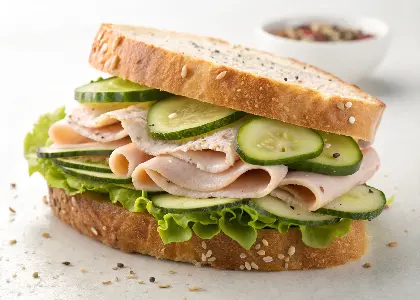
Day 1
Breakfast:
- Cream of Wheat with Egg Whites: Cook ½ cup Cream of Wheat according to package instructions (use water or low-potassium milk substitute). In a separate pan, sauté 2 egg whites with ½ cup diced zucchini in 1 tsp olive oil until set. Season with pepper.
Lunch:
- Turkey & Cucumber Sandwich: Layer 3 oz low-sodium turkey breast and ¼ cup sliced cucumber between 2 slices of white bread. Spread 1 tbsp light mayo. Serve with ½ small peeled apple.
Dinner:
- Baked Cod with White Rice: Season 3 oz cod with lemon juice and dill, then bake at 375°F for 12–15 minutes. Cook ½ cup white rice and toss with 1 tbsp chopped scallions (green part only).
Snacks:
- Air-Popped Popcorn: Pop 1 cup plain popcorn (no salt or butter).
- Cottage Cheese & Pears: Mix ¼ cup low-sodium cottage cheese with 2 canned pear slices (drained).
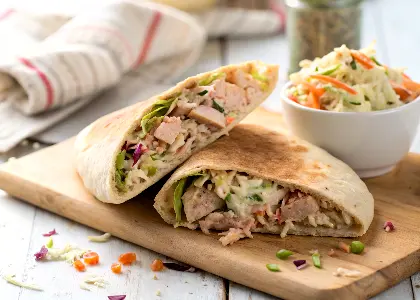
Day 2
Breakfast:
- French Toast with Blueberries: Whisk 1 egg + 1 tbsp milk, dip 1 slice white bread, and cook in 1 tsp butter until golden. Top with 1 tbsp maple syrup and ¼ cup fresh blueberries.
Lunch:
- Tuna Pita with Coleslaw: Drain 3 oz water-packed tuna, mix with 1 tbsp light mayo and ¼ cup diced celery. Stuff into 1 white pita. Serve with ½ cup shredded cabbage + 1 tbsp low-potassium dressing.
Dinner:
- Grilled Chicken & Egg Noodles: Grill 3 oz chicken breast with rosemary. Cook ½ cup egg noodles and toss with 1 tsp butter and parsley.
Snacks:
- Graham Crackers: 2 squares.
- Jell-O Cup: ½ cup prepared with water (no added fruit).

Day 3
Breakfast:
- Pancakes with Cranberry Juice: Prepare 2 small pancakes using white flour mix. Top with 1 tbsp butter and syrup. Serve with ½ cup low-potassium cranberry juice.
Lunch:
- Egg Salad Lettuce Wraps: Mash 2 hard-boiled egg whites with 1 tsp mayo. Wrap in lettuce leaves. Serve with 2 unsalted breadsticks.
Dinner:
- Herbed Chicken with Mashed Cauliflower: Season 3 oz skinless chicken breast with sage and grill until cooked through (165°F). Steam ½ cup cauliflower florets until tender, then mash with 1 tsp butter and a pinch of black pepper.
Snacks:
- Rice Krispies Treat: 1 small square.
- Canned Peaches: ¼ cup (drained syrup).
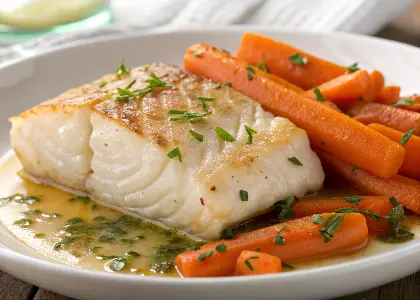
Day 4
Breakfast:
- Oatmeal & Hard-Boiled Egg: Cook ½ cup oatmeal with water. Stir in 1 tbsp brown sugar. Serve with 1 hard-boiled egg (discard yolk if needed).
Lunch:
- Grilled Cheese & Salad: Assemble 1 oz low-sodium cheddar between 2 white bread slices. Cook in 1 tsp butter until melted. Serve with ½ cup iceberg lettuce + 1 tbsp low-potassium dressing.
Dinner:
- Baked Cod with Steamed Carrots: Bake 4 oz cod with herbs and lemon; serve with 1/2 cup cooked white rice and 1 cup steamed carrots. (4 oz cod, 1/2 cup white rice, 1 cup steamed carrots)
Snacks:
- Vanilla Wafers: 4 cookies.
- Unsweetened Applesauce: ½ cup.
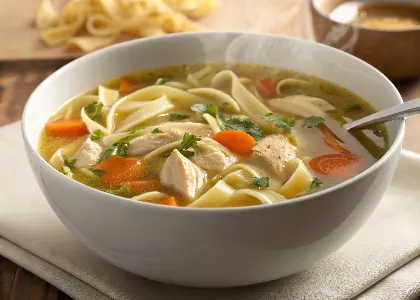
Day 5
Breakfast:
- Bagel with Cream Cheese: Toast ½ small plain bagel and spread with 1 tbsp cream cheese. Serve with ¼ cup drained canned pears.
Lunch:
- Chicken Noodle Soup & Crackers: Simmer 3 oz shredded chicken breast, ½ cup white noodles, and ¼ cup diced carrots in low-sodium broth. Serve with 4 saltine crackers.
Dinner:
- Baked Tilapia with Couscous: Season 3 oz tilapia with lemon and thyme; bake at 375°F for 10–12 minutes. Cook ½ cup couscous with 1 tsp olive oil.
Snacks:
- Angel Food Cake: 1 small slice.
- Peeled Grapes: 10 grapes (peeling reduces potassium).
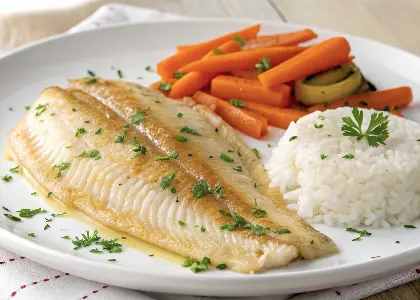
Day 6
Breakfast:
- Waffles with Raspberries: Toast 1 small frozen waffle and top with 1 tbsp syrup. Serve with ¼ cup raspberries.
Lunch:
- Baked Sole with Rice & Carrots: Bake 3 oz sole seasoned with lemon; serve with 1/2 cup white rice and 1 cup steamed carrots. (3 oz sole, 1/2 cup white rice, 1 cup carrots)
Dinner:
- Lemon Herb Shrimp with Polenta: Sauté 3 oz shrimp with garlic and lemon juice. Serve with ½ cup cooked polenta.
Snacks:
- Unsalted Pretzels: ½ oz.
- Sherbet: ½ cup.
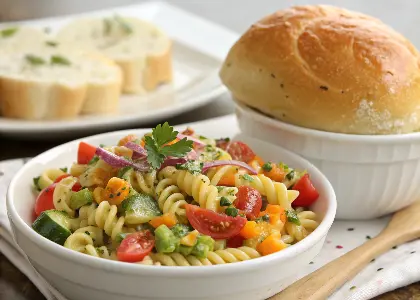
Day 7
Breakfast:
- Cornflakes & Egg Whites: Combine ½ cup cornflakes with ¼ cup rice milk. Serve with 2 hard-boiled egg whites.
Lunch:
- Pasta Salad & Dinner Roll: Toss ½ cup cooked macaroni with 1 tbsp low-potassium dressing and ¼ cup diced cucumber. Serve with 1 small white dinner roll.
Dinner:
- Roast Duck with Wild Rice: Roast 3 oz skinless duck at 350°F until cooked through. Serve with ½ cup cooked wild rice.
Snacks:
- Fruit Popsicle: 1 low-potassium flavor.
- Animal Crackers: 5 small pieces.
Low Potassium Foods List
Foods with high potassium content are limited or avoided in a low potassium diet menu.
Here is a list of low potassium diet foods, categorized by food groups:
1. Low Potassium Fruits
- Apples and apple juice
- Berries (strawberries, blueberries, raspberries, cranberries)
- Grapes and grape juice
- Peaches
- Pears
- Pineapple
- Plums
2. Low Potassium Vegetables
- Alfalfa sprouts
- Asparagus (6 or fewer spears)
- Beans (green or wax)
- Cabbage
- Carrots
- Cauliflower
- Celery
- Corn
- Cucumber
- Eggplant
- Lettuce
- Onions
- Parsley
- Peas (green)
- Peppers
- Radish
- Water chestnuts
- Zucchini
3. Low Potassium Breads and Grains
- White bread and rolls
- White rice
- Pasta (noodles, spaghetti, macaroni)
- Puffed wheat and rice cereals
- Cornbread
- Couscous
4. Non-Dairy Products
- Rice milk (unenriched)
- Almond milk (unenriched)
- Non-dairy creamer
- Hard cheeses (in moderation)
5. Protein
- Lean cuts of beef (in moderation)
- Skinless chicken
- Whitefish (e.g., cod, tilapia, flounder, and canned tuna in water)
- Salmon (In moderation)
- Canned sardines
- Egg whites
- Shellfish
6. Other Foods
- Herbs and spices (in moderation)
- Honey
- Jelly and jam
- Maple syrup
- Sugar
- Noodles
- Unsalted popcorn
- Unsalted pretzels
High Potassium Foods List
When following a low potassium diet, it’s important to limit or avoid foods that are high in potassium.
High potassium foods can cause complications in individuals with kidney problems or in those who need to control their potassium levels for other health reasons.
Below is a list of foods that are typically high in potassium and should be avoided or strictly limited in a low potassium diet menu:
1. Fruits high in potassium
- Bananas
- Oranges and orange juice
- Kiwi
- Avocado
- Dried fruits (such as prunes, raisins, apricots, and dates)
- Melons (such as cantaloupe and honeydew)
- Nectarines
- Pomegranates and pomegranate juice
- Prune juice
2. Vegetables high in potassium
- Potatoes (both white and sweet potatoes)
- Tomatoes (including products like tomato sauce, paste, and juice)
- Spinach (both raw and cooked)
- Beets and beet greens
- Brussels sprouts
- Swiss chard
- Winter squash (such as acorn and butternut)
- Pumpkin
- Artichokes
3. Dairy Products
- Milk (especially whole milk)
- Yogurt
- Ice cream
4. Proteins high in potassium
- Red meats (in large quantities)
- Poultry (in large quantities)
- Fish (such as halibut, mackerel, and herring, especially in large quantities)
- Beans and legumes (such as kidney beans, pinto beans, lentils, and chickpeas)
- Nuts and seeds (such as almonds, peanuts, sunflower seeds, and pumpkin seeds)
- Nut butters (such as peanut butter and almond butter)
5. Grains high in potassium
- Bran cereals and bran flakes
- Whole grain breads
- Whole wheat pasta and brown rice (in large quantities)
- Granola and muesli
6. Other foods high in potassium
- Chocolate
- Coconut
- Salt substitutes (as they often contain potassium chloride instead of sodium chloride)
7. Beverages high in potassium
- Sports drinks (often contain added potassium)
- Coconut water
Benefits of a Low Potassium Diet
A low potassium diet can offer several benefits, primarily for individuals who have conditions that affect the body’s ability to regulate potassium levels.
Here are some of the key benefits of adhering to a low potassium diet when it is medically indicated:
1. Prevents Hyperkalemia
- By limiting high-potassium foods, the diet helps to prevent the buildup of potassium in the blood, known as hyperkalemia, which can be dangerous.
2. Supports Kidney Health
- For those with chronic kidney disease or other renal impairments, a low potassium diet reduces the strain on the kidneys since they are responsible for filtering out excess potassium.
3. Reduces Risk of Heart Problems
- High potassium levels can affect the heart’s rhythm and lead to arrhythmia, which can be potentially life-threatening.
4. Medication Efficacy
- A low potassium diet can complement certain medications that affect potassium levels, such as ACE inhibitors or potassium-sparing diuretics, enhancing their efficacy while preventing side effects related to potassium.
5. Adrenal Gland Disorders Management
- Conditions like Addison’s disease affect hormone levels that regulate potassium. A low potassium diet can help manage these conditions.
6. Diabetes Management
- People with diabetes may also benefit from a 7 day meal plan for low potassium diet, as they can be more susceptible to kidney disease and hyperkalemia.
7. Improves Clinical Outcomes
- By managing potassium intake, individuals can prevent complications associated with high potassium levels, such as muscle weakness, fatigue, and numbness or tingling.
8. Encourages Healthy Eating Habits
- Following a low potassium meal plan can increase one’s awareness of the nutritional content of foods and encourage healthier eating habits.
Low Potassium Diet Tips
A low potassium diet typically involves consuming less than 2000 to 3000 milligrams of potassium per day, but the exact amount can vary based on individual health needs and doctor’s recommendations.
Here are some general guidelines when preparing a 7 day meal plan for low potassium diet:
1. Understand Serving Sizes
- Portion control is vital because even low potassium foods can become high in potassium if eaten in large quantities.
2. Read Food Labels
- Nutrition labels on packaged foods list the amount of potassium. Some labels may only state the percentage of daily value (%DV) based on a 2000-calorie diet.
3. Avoid High Potassium Foods
- Foods that are high in potassium include bananas, oranges, potatoes, tomatoes, spinach, avocados, and beans. These should be avoided or limited.
4. Choose Low Potassium Alternatives
- Opt for fruits like apples, berries, and grapes, and vegetables like cabbage, cucumber, and eggplant.
5. Be Cautious With Dairy
- Milk and yogurt are high in potassium, so they should be limited. Alternatives can include rice milk or almond milk (unenriched).
6. Limit Certain Protein Sources
- While meat is not high in potassium, portions should be kept to 3-4 ounces per meal. Some fish and substitutes like tofu can be higher in potassium.
7. Be Careful With Additives
- Salt substitutes, herbal supplements, and certain medications can contain potassium or affect potassium levels.
8. Cook Smart
- Double boiling or leaching vegetables can reduce their potassium content. Avoiding processed foods which might have added potassium is also essential.
9. Monitor and Adjust Regularly
- Regular blood tests are necessary to monitor potassium levels, and dietary restrictions may change based on these results.
Resources
Conclusion
As we wrap up this 7 day meal plan for low potassium diet, we hope that it has not only provided you with diverse and delicious meal options but also demonstrated that managing your potassium intake doesn’t mean you have to compromise on flavor or variety.
Please note that while a low potassium diet is beneficial for managing hyperkalemia, it’s important to ensure that you are still getting a balanced diet with all the necessary nutrients.
Potassium is an essential mineral, and too little potassium can also lead to health issues such as hypokalemia, which can cause muscle weakness, cramps, and fatigue.
Remember, while these low potassium diet recipes are tailored to keep potassium levels low, it’s essential to monitor portion sizes and consult with your healthcare provider to ensure they align with your specific dietary needs.
Let this low potassium meal plan be a stepping stone towards a healthier lifestyle, and may each meal bring you one step closer to achieving balance and wellness in your diet.
Continue to explore new recipes and foods that fit within your nutritional parameters and enjoy the journey to better health.
You may also be interested in checking out these healthy meal plans:
- Endometriosis diet plan and self-care tips
- Low sodium diet meal plan
- What foods should I avoid when taking Trulicity?
- How long does it take to reverse prediabetes?
- 21-day fatty liver diet plan
- 7-day meal plan for prediabetes
- 3000-calorie meal plan
- 7-day high protein meal plan
- 7-day elimination diet meal plan
- 7-day meal plan for pregnant women
- 7-day PCOS diet plan
- 7-day bone broth diet plan
- 7-day diet plan for high blood pressure
- Foods to avoid if alkaline phosphatase is high?
- 7-day anemia diet plan
- 7-day MIND Diet menu plan
- 7 day mediterranean diet plan
FAQs
Are bananas bad on a low potassium diet?
Yes, bananas are high in potassium and should be limited or avoided on this diet.
Is coffee okay for a low potassium diet?
Yes, coffee contains low potassium (116mg) so it can be included in a low potassium diet.
Can a low potassium diet help with kidney disease?
Yes, managing potassium intake is crucial for individuals with kidney disease to prevent complications.
Is cheese allowed on a low potassium diet?
Certain cheeses, like mozzarella and cream cheese, are lower in potassium and can be included in moderation.
What can I eat for breakfast on a low potassium diet?
Options include rice crispies with low-fat milk, egg salad, white toast with cream cheese, and apple slices.
Can leaching reduce the potassium content in certain vegetables?
Yes, leaching, a cooking process involving soaking and rinsing vegetables and can reduce the potassium content in vegetables such as white and sweet potatoes, carrots, beets, winter squash, and rutabagas.
How can I cut down on potassium in my diet?
You can cut down on potassium in your diet by reading food labels, being aware of serving sizes, draining and rinsing canned vegetables, fruits, and meats before serving, and choosing lower potassium alternatives whenever possible.

